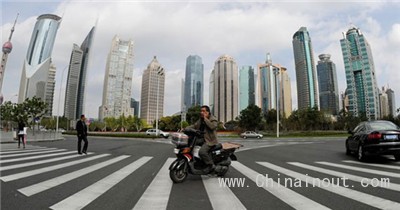坚信中国崛起缘于国家强势干预经济的批评人士为数不少,由政策制定者和评论员们组成的这些批评者强烈谴责北京奉行的国家资本主义。但他们的观点是错误的,而更糟的是,他们可能引发短视和毫无建设性的回应。
现实情况是,中国经济快速崛起是市场角色不断扩大和私营企业壮大的结果。在一个实际规模扩大了25倍的经济体中,私营企业贡献的产出比例,从1978年中国开始改革时的零,升至如今的逾三分之二。同期几乎所有的就业增长均来自私营企业。私营企业还日益成为出口增长的主要贡献因素。
中国国有企业的角色,在制造业收缩得尤其快——中国的制造业在上世纪80年代向私营企业放开了竞争。国企在制造业所占产出份额现在只有五分之一,而在1978年则有五分之四。人们普遍认为,自全球金融危机爆发以来,中国国有工业企业如今已经复兴。实际上,自2008年以来私营企业产出年均增长18%,是国企扩张速度的两倍。
国有工业企业相对疲弱表现的深层根源在于生产率低下。大多数投资资金来自留存利润,因此资产回报率是国企两倍多的私营工业企业能够更为迅速地扩张。大多数国有银行的行为日益商业化,让私企更加如鱼得水:在最近几年里,它们向私企发放的贷款几乎是发放给国企的两倍。
创建于2003年、监督各大国有非金融企业的中国国有资产监督管理委员会(SASAC)或许是中国工业政策的最佳体现。批评人士称,国资委青睐大型国企,力图创建更大、更强、更加盈利丰厚的国家冠军企业。但这种努力失败了:自2007年以来国资委监督企业的资产回报率大幅下降,现在还不到其资本成本的一半。
即便在被国资委确认为北京要保持相对强有力控制的钢铁行业,也体现出国企和私企之间的差距。在2005年,这似乎是一个轻松的任务:当时全国一半的钢铁由国企生产,它们的效率与私企相当。但是在2006年以后的几年里,年均产出增长率降至9%(该十年的头几年平均增长率超过20%),国企回报率大幅下降。到2012年,它们出现了亏损,产量份额下降至三分之一以下。相比之下,私营钢铁企业的资产回报率在2006年之后出现上升,在2011年达到逾10%的峰值后略有下降。由于私营钢企的投资是国企的两倍,它们的产量份额仍会继续上升。
私营企业兴起的例外是在金融、电信、其他高科技商业服务行业,以及油气行业的上游领域。在制造业,私企现在的投资份额是国企的7倍。但在服务业,国企投资份额超过私企,近几年只是略有下降。然而,私营服务提供商的生产率比国企高出一倍,这表明资本配置严重不当。
中国国企的地盘正在缩小,但因为它们的利润远低于资本成本,它们依然拖累了增长。如果中国实施去年宣布的经济改革(尤其是打破除电网等自然垄断业务以外的一切垄断),让市场成为资源配置的决定性因素,私企将取代国企在服务业的角色。这将让中国保持相对高速的经济增长,从而继续其作为全球增长主要驱动因素的角色。那些对中国崛起有着根本性误解并据此制定政策和作出预测的人很可能错失机遇。
注:本文作者是彼得森国际经济研究所(Peterson Institute)研究员,著有《市场高于毛泽东:中国私营企业的崛起》(Markets over Mao, the Rise of Private Business in China)一书。
(更多全球资讯请关注中国进出口网)

There is no shortage of critics who confidently attribute China’s rise to the forceful intervention of the state in the economy. But the ranks of policy makers and commentators decrying Beijing’s brand of state capitalism are wrong – and, worse, they risk provoking short-sighted and counterproductive responses.
The reality is that China’s rapid economic ascent is the result of the expanding role of the market and the rise of private businesses. Private companies now account for more than two-thirds of output, up from nothing when reform began in 1978, in an economy that has expanded 25 times in real terms. They account for almost all employment growth in the same period. Private companies are also increasingly the leading contributors to export growth.
State companies’ shrinking role has been particularly rapid in manufacturing, which opened up to competition from private businesses in the 1980s. State enterprises’ share of output in the sector is now only a fifth, compared with four-fifths in 1978. Conventional wisdom says state industrial companies have enjoyed a resurgence since the onset of the global financial crisis. In fact, the growth in output of private businesses since 2008 has averaged 18 per cent, twice the pace of expansion of state businesses.
Underlying the relatively poor performance of state industrial companies is low productivity. Most investment is financed with retained earnings – so private industrial businesses, with a return on assets more than twice that of state companies, can expand more rapidly. This is reinforced by the increasingly commercial behaviour of mostly state-owned banks: in recent years they have lent almost twice as much to private as to state companies.
China’s industrial policy is perhaps exemplified best by the State-Owned Assets Supervision and Administration Commission, created in 2003 to oversee the largest state-owned non-financial enterprises. Critics say it favours state companies in an attempt to create national champions that are larger, more powerful and more profitable. But this has failed: the return on assets of Sasac’s companies has plummeted since 2007, and is now below half their cost of capital.
The disparity between state and private companies is evident even in the steel industry, identified by Sasac as one industry in which Beijing was to maintain relatively strong control. This seemed an easy task in the mid-2000s, when state companies produced half of all steel output and their efficiency matched that of private companies. But when the annual growth in output fell to an average of just 9 per cent after 2006, compared with its average pace of more than 20 per cent earlier in the decade, state companies’ returns fell sharply. By 2012 they were in the red, and their share of production had fallen below a third. In contrast, the return on assets of private steel companies rose after 2006, reaching a peak of over 10 per cent in 2011 before declining slightly. With private steel companies investing more than twice as much as their state counterparts, their rising output share will continue.
The exception to the rise of private business is in finance, telecoms and other high-tech business services, as well as in upstream oil and gas. In manufacturing, private companies now account for seven times more investment than state ones. But in services the share of state companies’ investment exceeds that of private companies and has declined only very slightly in recent years. Yet the productivity differential favours private service providers by a margin of two to one over state enterprises, suggesting a substantial misallocation of capital.
The footprint of state companies is shrinking but, because they earn far less than their cost of capital, they remain a drag on growth. If China enacts economic reforms announced last year – particularly eliminating all but natural monopolies such as power distribution – and making the market the decisive factor in the allocation of resources, private businesses will displace state enterprises in services. That would allow China to sustain a relatively high rate of growth and thus to continue its role as a leading driver of global growth. Those who make policies and predictions based on a fundamental misunderstanding of China’s ascent are likely to miss out.
The writer is a fellow at the Peterson Institute for International Economics and author of ‘Markets over Mao: The Rise of Private Business in China’
(更多全球资讯请关注中国进出口网)











